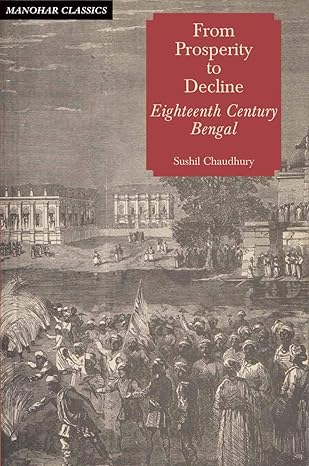From Prosperity to Decline Eighteenth Century Bengal
no information available
This book is an in-depth study of the eighteenth century Bengal especially the pre-Plassey period. It tries to dispel some of the myths which persist even now. Professor Sushil Chaudhury argues that Bengal's prosperity which was so marked during the first half of the eighteenth century came to an end gradually after Plassey and in the second half of the century there followed an economic impoverishment of the province under the aegis of the English East India Company and its servants. He contends that it is the very prosperity of Bengal and not its decline or weakness which made it a lucrative prize in the eyes of the Europeans in the mid-eighteenth century. He demonstrates this with a thorough analysis of Bengal's trade and industries as also the activities of the merchant-banking class in the eighteenth century. The author argues that the British conquest of Bengal was neither accidental nor was it the result of an internal crisis in Bengal. It has been indicated that there was neither a political nor an economic crisis in the province in the period prior to Plassey. The collaboration thesis has also been discounted. It is argued on the basis of both quantitative and qualitative evidence that even in the mid-eighteenth century it was the Asian trade – not the European trade – which was the most important factor in the commercial economy of Bengal. The author maintains that the impact of the European trade on Bengal economy was only marginal touching as it did the fringe of the economy. He shows that the British conquest of Bengal became imperative for the retrieval of the private trade fortunes of the Company servants which was facing a severe crisis in the late 1740s and the early 1750s. Based mainly on the manuscript records preserved in various European and Indian archives the book will be of immense interest to students of history and economics.
... Read more Read less










